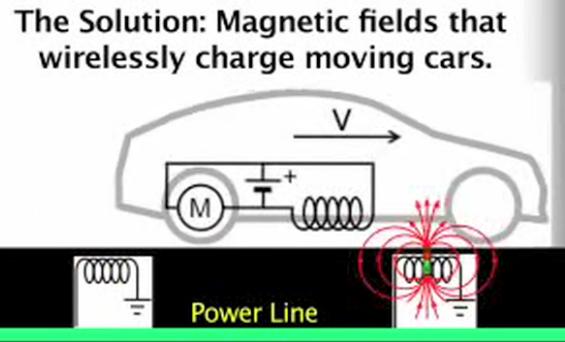U.S. Scientists are Planning the Electrical Highway

Researchers at Stanford University have devised a way to prevent electric cars starting on a long drive to the power: To provide the street with coils that transmit electricity wirelessly via magnetic resonance in the car.
Lack of coverage is considered to be major drawback for electric cars: For daily trips to work or in the city reaches a battery charge. But what about the trip to the countryside on weekends or holidays? There are different approaches to circumvent this problem: The U.S. company Better Place is about to battery exchange stations where drivers exchange of an empty battery with a full. We would rather make the same road to the energy donor, however, suggest researchers from Stanford University before.
Take charge and
“Our vision is that you drive on any highway while the car is charging the same,” says Shanhui fan, but admits that for the entire trunk road network should be umkrempelt.For the Stanford scientists want the streets to provide a wireless charging system, they write in the journal Applied Physics Letter .
They want not – as most current wireless communication systems – use the magnetic induction. Instead, the electric current by magnetic resonance transfer. For this, two copper coils are adjusted so that they oscillate at the same frequency. The transmitter is connected to a power source and generates a magnetic field. This in turn brings the second coil to vibrate. In this way, electrical energy is transmitted from the transmitter and receiver.
In consonance current
Advantage of this technique is that only electricity is transmitted when two coils vibrate on the same frequency. For objects with a different frequency, the system had no effect, says Fan, the chip manufacturer Intel has a few years ago experimented with this technique . Fujitsu 2010, a battery charger for mobile phones presented, which uses magnetic resonance.
The starting point for the Stanford researchers, however, was the work of colleagues at the Massachusetts Institute of Technology . Who have already a stationary loading system with this technique developed that transmits 3 kilowatts. They market their own businesses.
Shortlink:

Recent Comments